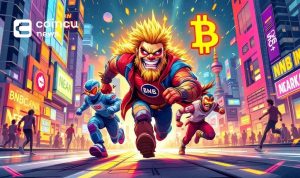Moloch DAO is a decentralized autonomous organization (DAO) framework that enables the creation and operation of DAOs on the Ethereum blockchain. It can refer to the framework itself, a description of a DAO that uses the framework, or the name of the Ethereum grant-giving DAO that originally developed the framework.
What is The Moloch DAO Framework?
The Moloch DAO architecture is designed to be simple, secure, and highly extensible. Unlike other early DAO frameworks, it consists of a single smart contract per DAO, prioritizing simplicity and ease of use.
The key features of the Moloch DAO framework include:
-
Permissioned membership – New members can only join through a voting process where existing members vote them in. This ensures a level of trust and control within the DAO.
-
Weighted voting – Members can have varying governance weights, giving them more or less influence in decision-making. This is different from traditional multisig wallets where each member has a single vote.
-
Non-transferrable governance power – Voting and economic rights within the DAO are not liquid, meaning they cannot be transferred or sold.
-
Ragequit – Members have the ability to exit the DAO by redeeming their membership shares in return for a proportional amount of assets in the DAO’s treasury. This protects minority members and provides a mechanism for dissenting members to exit.
Moloch DAOs propose actions through proposals. These proposals need to be sponsored by a member of the DAO. During the voting period, members vote on the proposal based on their shares. A proposal is considered passed if it receives more share votes in favor than in opposition, without requiring a specific quorum.
If a proposal passes, it goes through a grace period before execution. During this period, members who did not vote in favor of the proposal have the option to Ragequit. This protects minority members even without a quorum requirement.
While proposals cannot directly interact with other smart contracts, Moloch DAOs can use Moloch Minions, which are special helper smart contracts, to achieve this. Minions enable Moloch DAOs to interact with other decentralized applications and protocols, expanding the capabilities and functionality of the DAO.
Based on these core features, Moloch DAOs have several important properties:
-
Strong protection for minority members – The Ragequit feature allows members to exit and redeem their shares, even if they are in the minority, ensuring fairness and preventing the dominance of a majority faction.
-
Security – The simplicity and focus on security in the Moloch DAO framework reduce the risk of vulnerabilities and exploits, making it a reliable choice for decentralized governance.
-
Highly decentralized and distributed power – The permissioned membership and weighted voting system distribute power among members, preventing any single entity or group from having excessive control.
-
Support for efficient coordination – The proposal system and voting mechanism facilitate efficient decision-making and coordination among DAO members, allowing for effective governance and execution of actions.
What are the versions of Moloch DAO?
Since its initial launch, the Moloch DAO framework has evolved and introduced new capabilities. The most notable version is Moloch V2, which offers additional functionality and flexibility.
Moloch V2 allows DAOs to acquire and spend different tokens, expanding the range of assets that can be managed by the DAO. It also introduces the “Guild Kick” proposal type, which enables members to collectively remove another member from the DAO with a full refund of their assets.
Additionally, Moloch V2 introduces “loot shares,” which represent economic exit rights without voting rights. This allows members to retain economic benefits while relinquishing their voting power, providing more flexibility for participation in the DAO.
The Moloch community is continuously working on further improvements and enhancements to the framework. Moloch V3, currently in development, is expected to bring additional flexibility and extensibility to the framework, enabling even more sophisticated DAO structures and functionalities.
What is The First Moloch DAO?
The first Moloch DAO, known as MolochDAO, is an Ethereum grant-awarding organization focused on supporting infrastructural improvements within the Ethereum ecosystem. It was summoned by Ameen Soleimani on February 14th, 2019 at ETHDenver.
The MolochDAO whitepaper, co-authored by Arjun Bhuptani, James Young, Layne Haber, and Rahul Sethuram, provides an ideological overview of the key features of the V1 Moloch framework. This whitepaper serves as a reference for understanding the principles and design choices behind Moloch DAO.
What are other examples of Moloch DAO?
Since the launch of MolochDAO, many other DAOs have adopted the Moloch DAO framework. These DAOs include MetaCartel, Raid Guild, and Meta Gamma Delta, among others. The framework’s simplicity, security, and extensibility have made it a popular choice for various decentralized communities and initiatives.
The DAOhaus app provides an Explore section where users can discover and explore different Moloch DAOs and other community-driven DAOs built on the Moloch framework. DAOhaus aims to simplify the process of launching a DAO, making it accessible to a wide range of projects and communities.
Author: Collectively authored by DAOhaus
DAOhaus is the home for purpose-driven community DAOs and has grown from a 2019 hackathon project into a fully-fledged platform with +1,000 DAOs. DAOhaus enables users to add the capabilities of DAOs to their own projects without having to worry about the complexities of writing smart contracts or building dApps. You can launch a DAO via DAOhaus in a few clicks.














